Best Go Programming Books to Buy in January 2026
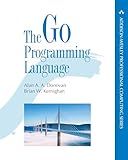
Go Programming Language, The (Addison-Wesley Professional Computing Series)


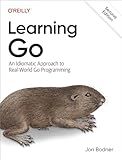
Learning Go: An Idiomatic Approach to Real-World Go Programming


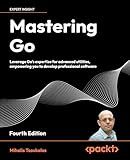
Mastering Go: Leverage Go's expertise for advanced utilities, empowering you to develop professional software


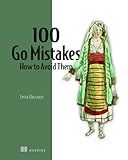
100 Go Mistakes and How to Avoid Them


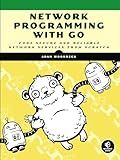
Network Programming with Go: Code Secure and Reliable Network Services from Scratch


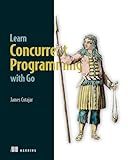
Learn Concurrent Programming with Go


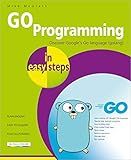
GO Programming in easy steps: Learn coding with Google's Go language



System Programming Essentials with Go: System calls, networking, efficiency, and security practices with practical projects in Golang


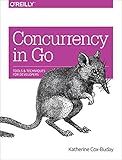
Concurrency in Go: Tools and Techniques for Developers


To work with arrays and slices in Go, you need to understand their basic concepts and how they differ from each other.
Arrays in Go are fixed-length sequences of elements of the same type. The length of an array is determined when it is created and cannot be changed thereafter. You can declare an array using the following syntax:
var arr [size]datatype
Here, size represents the length of the array, and datatype specifies the type of elements it can hold. For example:
var arr [5]int // declares an array of integers with length 5
You can initialize an array during declaration using an array literal:
arr := [5]int{1, 2, 3, 4, 5}
Individual elements of an array can be accessed using indexing, starting from 0:
x := arr[0] // accesses the first element of the array
Slices, on the other hand, are more flexible and dynamic. A slice is a reference to a contiguous section of an underlying array and has a variable length. Slices are declared using the following syntax:
var slice []datatype
Unlike arrays, slices don't require a specific length. You can create a slice from an existing array or even from another slice. For example:
arr := [5]int{1, 2, 3, 4, 5} slice := arr[1:3] // creates a slice containing elements [2, 3]
Slices can also be created using the make function:
slice := make([]int, 5) // creates a slice of length 5 with zero values
Slices are dynamic, allowing you to append elements using the append function:
slice := []int{1, 2, 3} slice = append(slice, 4) // appends 4 to the slice
To modify or access elements in a slice, you use indexing, similar to arrays:
x := slice[0] // accesses the first element of the slice slice[1] = 10 // modifies the second element of the slice
One important concept to understand is that slices are references to arrays. When you pass a slice to a function or assign it to another slice, they both refer to the same underlying array. Modifying the elements of one slice will affect the elements of the other slices referencing the same array.
In conclusion, arrays have fixed lengths, while slices are dynamic. Slices are references to underlying arrays and provide more flexibility for working with collections of elements in Go.
How to initialize an array in Go?
In Go, you can initialize an array using the following syntax:
var arrayName [size]dataType
Here's an example where we initialize an array of integers with a size of 5:
var numbers [5]int
By default, when you initialize an array, all its elements will be initialized with their zero values. For integers, the zero value is 0.
If you want to initialize the array with specific values, you can use the following syntax:
var arrayName = [size]dataType{value1, value2, ..., valueN}
Here's an example where we initialize an array of integers with specific values:
var numbers = [5]int{1, 2, 3, 4, 5}
You can also use an ellipsis (...) to let the compiler infer the array size based on the number of values you provide. Here's an example:
var numbers = [...]int{1, 2, 3, 4, 5}
In this case, Go will automatically determine that the array size is 5 based on the number of values provided.
Note: Once an array is initialized, you cannot change its size. If you need a flexible-sized collection, consider using slices instead.
What is the difference between len() and cap() in Go slices?
In Go, len() and cap() are built-in functions used to retrieve information about slices. The difference between them is as follows:
- len() function: len() returns the length of the slice, which is the number of elements in the slice. It calculates the number of elements currently stored in the slice. It is equivalent to accessing the Len field of the slice header.
- cap() function: cap() returns the capacity of the slice, which is the maximum number of elements the slice can hold. It calculates the number of elements between the start of the underlying array and the end of the slice. It is equivalent to accessing the Cap field of the slice header.
To summarize, len() gives you the current length of the slice, while cap() tells you the maximum capacity of the slice.
How to reverse a slice in Go?
To reverse a slice in Go, you can use the following approach:
- Create a function that takes in a slice as a parameter and returns a new reversed slice.
- Declare a new slice with the same length as the input slice.
- Traverse the input slice from the end to the beginning using a for loop.
- Assign the values of the input slice in reverse order to the new slice.
- Return the new reversed slice.
Here is an example implementation:
func reverseSlice(input []int) []int { reversed := make([]int, len(input)) for i, j := len(input)-1, 0; i >= 0; i, j = i-1, j+1 { reversed[j] = input[i] } return reversed }
To use this function, pass your slice as a parameter and assign the returned reversed slice to a new variable. Here's an example:
mySlice := []int{1, 2, 3, 4, 5} reversedSlice := reverseSlice(mySlice) fmt.Println(reversedSlice) // Output: [5 4 3 2 1]
Note that this implementation creates a new reversed slice rather than modifying the original slice. If you want to reverse the original slice in-place, you can modify the reverseSlice() function accordingly.
How to check if a value exists in a slice in Go?
In Go, you can check if a value exists in a slice using a for loop and range keyword. Here's an example:
package main
import ( "fmt" )
func main() { slice := []int{1, 2, 3, 4, 5}
value := 3
found := false
for \_, v := range slice {
if v == value {
found = true
break
}
}
if found {
fmt.Printf("Value %d exists in the slice\\n", value)
} else {
fmt.Printf("Value %d does not exist in the slice\\n", value)
}
}
In this example, we have a slice slice and a value value that we want to check. We initialize a boolean variable found as false. Then, we iterate over the slice using a for loop and range keyword. Inside the loop, we check if the current element v is equal to value. If it is, we set found as true and break out of the loop. After the loop, we check the value of found to determine if the value exists in the slice.
Note that this approach is suitable for small slices. If you have a large slice and need to perform frequent existence checks, it might be more efficient to use a map instead.
What is a slice capacity in Go?
In Go, a slice capacity refers to the number of elements that can be accommodated in the underlying array of a slice.
A slice in Go is a dynamically-sized, flexible view into the elements of an array. It is a more powerful and convenient alternative to arrays. A slice is created by specifying a range of elements from an array or another slice. It has a length, which is the number of elements in the slice, and a capacity, which is the number of elements that can be accommodated in the underlying array starting from the first element in the slice.
Initially, the capacity of a slice is always equal to its length. However, the capacity can be extended by using the built-in append function. If the length of the slice exceeds its capacity while appending elements, a new, larger underlying array is created, the elements from the original slice are copied to the new array, and the capacity of the slice is updated accordingly.
The knowledge of slice capacity is helpful in understanding the performance characteristics of the code as extending the slice beyond its capacity can trigger reallocation of the underlying array, which can be an expensive operation.
